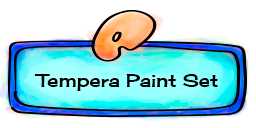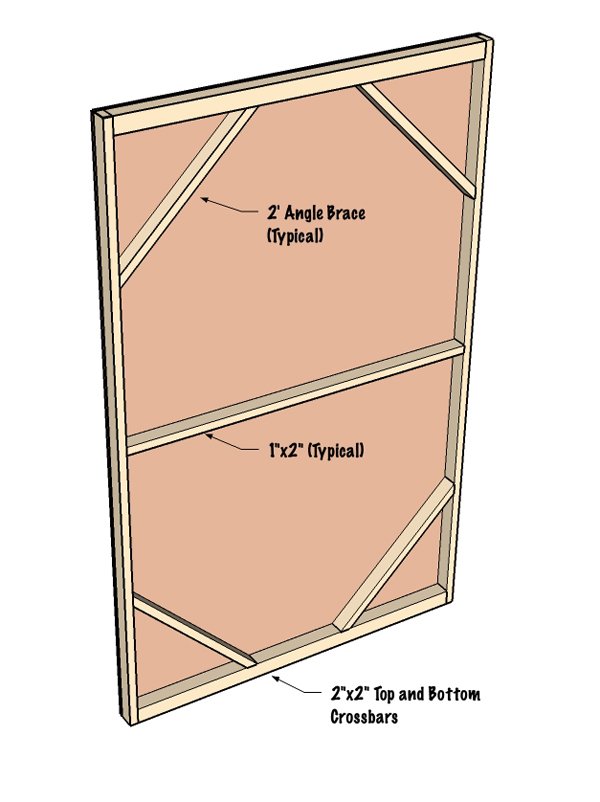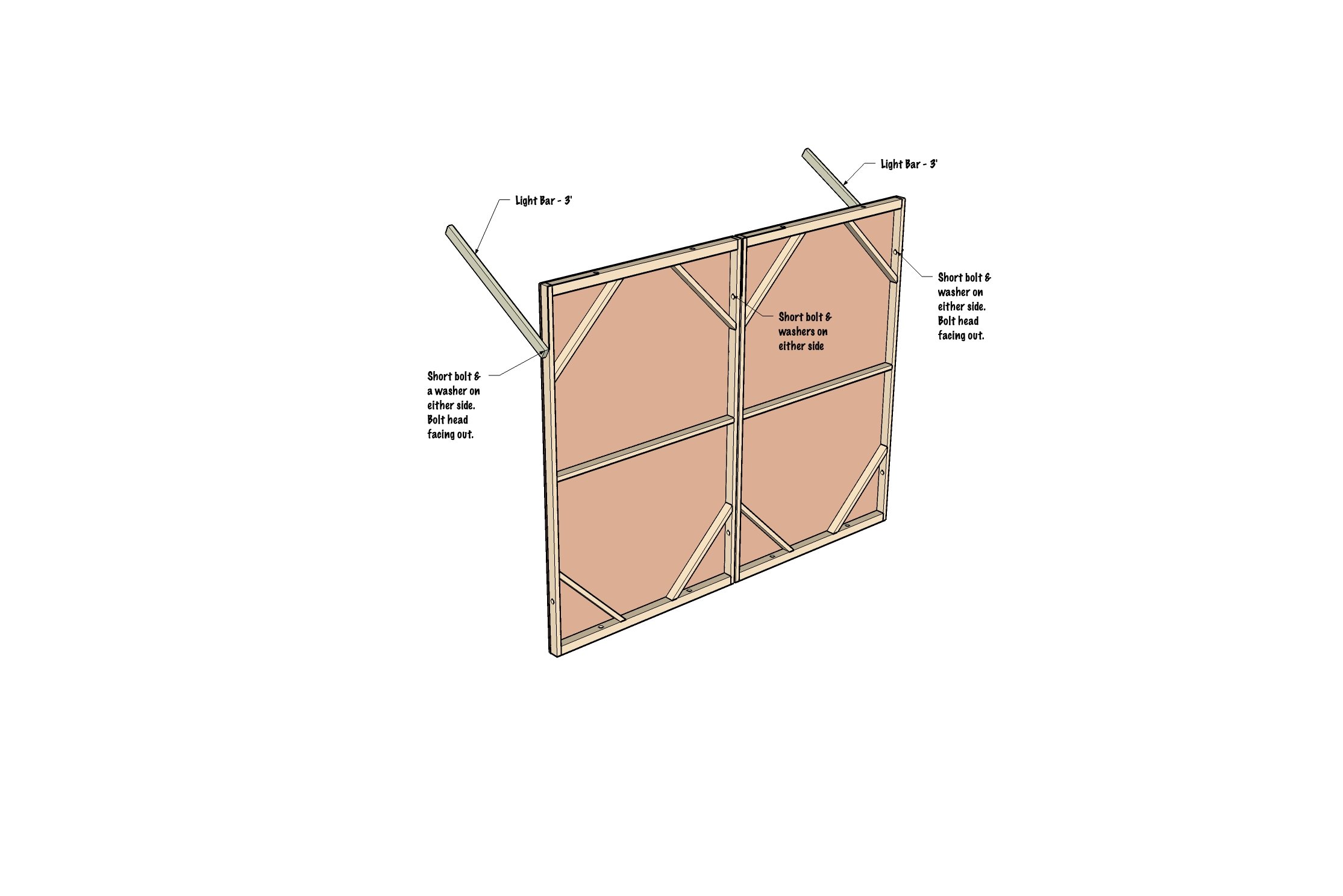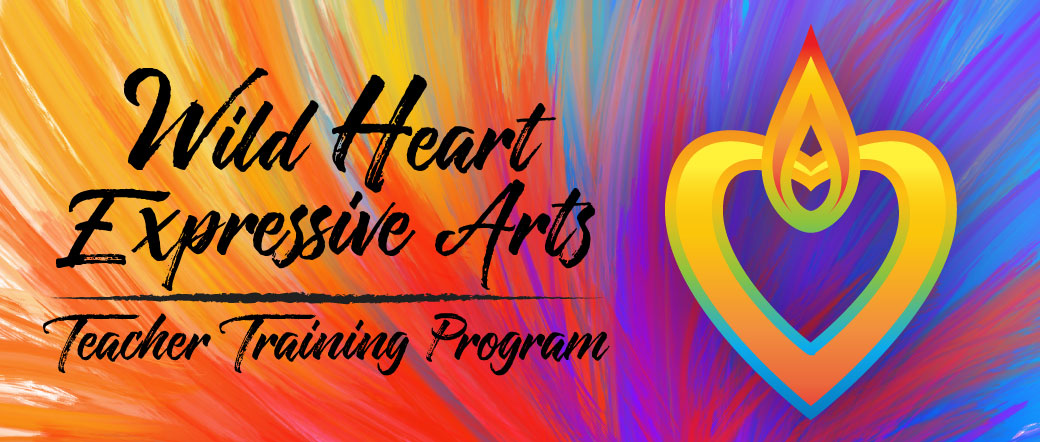
Wild Heart Expressive Arts Teacher Training Resources
We are listing all of these sites because at one time or another we found them useful in purchasing supplies for our retreats and workshops. However, please note that these are not the only or even best places to get your supplies. These are just what we have found helpful. If you have a local alternative source or brand for paint, paper, brushes, or any other items please use them and feel free to share them with the rest of the group in the forum. Also note that due to the pandemic and ongoing global supply issues, some of these items or companies may no longer exist. Where possible we have tried to indicate replacements or alternatives to items that are now hard to find, but realize you may continue to run into limitations as you put together your own studios.
The supplies listed here are what we use for the painting process specifically. We have chosen these supplies (large thick paper, cheap tempera paint, mid to cheap level brushes, etc.) specifically to help you and your students feel free when expressing themselves. Often expensive supplies like oils or acrylics can limit people and make them feel self conscious about wasting supplies or that they don’t “deserve” to use them. Using readily available and moderately priced materials can help avoid these issues and encourage creativity.
An important note about tempera paints…
The paint we are recommending is called tempera paint and is often used in schools for children or referred to as poster paint. It is relatively cheap and is often sold in 16 oz (about half a liter). It is fairly liquid and pours easily from a bottle like syrup. The paint we use is also non-toxic, water soluble, washable (thought it may leave stains on light clothing).
The paint we use is NOT “Egg Tempera” which is very expensive and requires specific techniques to work with. Egg Tempera comes in small silver tubes and does not flow as easily as what we will be using. Be sure to ask for poster paint or children’s paint if you are not sure as sometimes the names are used interchangeably.
For this training we are asking you to purchase a basic set of tempera paints and paper as painting will be the primary modality through which we explore the creative practice in our weekly practice sessions. We have put together a basic process painting supply list at the art supplier Dick Blick that you can access below. Please note that if you already have an easel or other support, brushes you are wiling to use, or paint that you aren’t precious about, you are welcome to use them. You are not required to buy all of these items if you already have some of these things. However, we do strongly encourage the use of tempera paints and paper during this training so please purchase those if you do not have them already.
We have also created a longer list of additional colors and types of paint for those that are willing to spend a bit more and would like to explore metallic, fluorescent, and/or pearlescent colors. Again, please feel free to pick and choose from this list. There are also several different papers listed for you to try but you don’t need to order them all.
A note to those outside of the US…
We know that the sources and products listed below are available in the US but, unfortunately, may not be available elsewhere. However, in most areas you can find substitutes if you contact you local art store or check online. We will be listing suppliers and products below in other parts of the world as we learn about them. Note, however, that because we have never used these suppliers or products we can’t recommend them. They are listed here for your information and you will need to evaluate them for yourselves.

Primary Vendors & Suppliers
Paper
Sourcing paper
Paper is one of the supplies that has consistently changed over the years and sourcing large sized paper cheaply can be a challenge. In our studio and retreats we stocked White #80 Springhill Bristol Vellum (GSM 175) listed below. This is a good paper with a smooth surface and generally thick enough to hold the paint and not bleed through. It will get soggy if a lot of paint is used but is generally sturdy. It is an industrial paper intended for the printing of things like menus, cards, etc. It is not archival quality though we have paintings done over 30 years ago in storage that have done just fine. However, it is not the only or even best paper so don’t feel like you have to have it as it can be hard to find.
Also, note that usually you are required to buy these in a carton of 500 which weights about 100 pounds. As a result, if you need to have it shipped to you, it is usually considered freight and will incur a lot of extra costs and will be dropped on the sidewalk or you will need to get it off the back of the shipping truck. Be sure to ask the supplier what extra costs and conditions are required if you have it shipped this way. If you can find it in a store outlet like Kelly Spicer and pick it up yourself that’s usually cheaper and easier.
About paper weight…
Designations of paper weight are generally confusing and misleading. The American system lists paper in terms of pounds but may refer to card stock or regular paper which are very different. As a result the easiest way to compare paper thickness is to compare the GSM or Grams per Square Meter. This is a metric weight that is consistently used by all manufacturers and provides the most consistent and accurate measurement of how thick a paper is. GSM is noted for all of the paper listed below. The primary paper we used in our studio, Springhill Vellum Bristol, has a GSM of 175. Anything slightly below that to about 160 GSM should be fine for painting. Anything over that will be thicker and sturdier but will also be more expensive.
25×35 80# Springhill Vellum Bristol White (GSM 175)
A carton is 500 sheets.
- Vendor: Kelly Spicer Paper (Search for item 1301918 or Springhill Vellum Bristol)
26×40 80# Springhill Vellum Bristol White (GSM 175)
This can be cut in half for a 26×20 sheet for an additional fee. A carton is 1,000 sheets.
- Vendor: Kelly Spicer Paper (Search for item 1301440 or Springhill Vellum Bristol)
Art Paper
You can usually find nice heavy weight paper at your local art store or online art store. However, it is generally more expensive per sheet and the maximum size is smaller than the Springhill listed above. There are many different art papers for different purposes. Anything labeled as drawing or sketch will be too thin to carry paint. Acrylic, oil, or water color papers will definitely work. However, they tend to be very expensive and some may have a significant tooth or surface texture which some people find annoying for working with tempera paints. A good compromise are Mixed Media papers and/or Bristol Vellum papers which are usually very smooth.
Most Mixed Media pads from either Canson or Strathmore are good choices as they have a generally smooth surface and are heavier weight to carry water and paint. The Canson XL series is cheaper than the Strathmore and about the same weight as the Springhill. You can also get some of these papers in large rolls which is great if you know you are going to work large and don’t want to have to tape paper together. Dick Blick and other companies also carry Mixed Media or Bristol Vellum pads which may be cheaper. Be sure to check the GSM before purchasing.
Mixed Media Paper
Canson XL Mixed Media Pad (160 GSM)
Canson XL Mixed Media Roll 36″ x 10yds (160 GSM)
Canson XL Mixed Media Roll 48″ x 10yds (160 GSM)
Strathmore 300 Series Mixed Media Pad (190 GSM)
Strathmore 400 Series Mixed Media Pad (300 GSM)
Strathmore 400 Series Mixed Media Roll 42″ x 8 yds (300 GSM)
Vellum Bristol Paper
Blick Bristol Vellum Pad (270 GSM)
Canson XL Bristol Vellum Pad (260 GSM)
Strathmore 300 Series Bristol Vellum Pad (270 GSM)
Strathmore 400 Series Bristol Vellum Pad (270 GSM)
Paint
The paint we are recommending is called tempera paint and is often used in schools for children or referred to as poster paint. It is relatively cheap and is often sold in 16 oz (about half a liter). It is fairly liquid and pours easily from a bottle like syrup. The paint we use is also non-toxic, water soluble, washable (thought it may leave stains on light clothing).
The paint we use is NOT “Egg Tempera” which is very expensive and requires specific techniques to work with. Egg Tempera comes in small silver tubes and does not flow as easily as what we will be using. Be sure to ask for poster paint or children’s paint if you are not sure as sometimes the names are used interchangeably.
There are also different grades of tempera paint. The cheaper the paint, the less pigment it has and more filler. This means that it will be less opaque and more watery when applied. The higher grades will have more pigment and will cover more opaquely. Some brands do not offer different grades. The Dick Blick brand offers an Essentials, Student, and Premium series of tempera paint with Premium being the highest pigment content and generally more satisfying experience. We use is Dick Blick Premium Series Tempera Paint in our classes and workshops. There are a wide range of colors as well as neon and some metallic paints available in this range. However, there are other brands that are notable as well such as ChromaTemp which we use for neon and pearlescent colors. Other brands that provide tempera paint include Faber-Castel, Handy Art, Prang, Richeson, Crayola, Jaz, Arteza, and Sargent Art. You may wish to get some samples and compare the experience for yourself.
There are also glitter paints and glitter glues. We have stopped providing these at our events due to the ecological impact of glitter but also because dried glitter is challenging to clean and vaccuum. However, you may want to explore these options as well.
Basic Tempera Paint, Flourescent, and some Metallics (Dick Blick Premium Series Tempera Paint)
- Vendor: Dick Blick
Fluorescent & Pearlescent Paint (Chroma Temp)
- Vendor: Dick Blick
Brushes
You can use any brushes you want to with tempera paint. However, synthetic brushes are usually cheaper than natural fiber brushes such as squirrel or sable. You will want to get yourself a small collection of 10 or so different types of brushes to play with and see which ones are you favorites. Be sure to get a round, flat, fan, and a larger wash brush at a minimum. In addition you should choose several different sizes from some small ones for fine detail work and larger ones (½” wide to 1″ wide) for covering big areas. We also recommend gathering a small collection of sponges or other interesting objects that can be use to apply paint. In the basic supplies set we list a couple of options for cheap student grade synthetic brushes but feel free to purchase ones that look intriguing to you. We use a wide range of water color and acrylic brushes in our classes that you can find at any art supplier. We usually buy what’s on sale.
Basic Brushes
- Vendor: Dick Blick
Isabey Watercolor Brushes
Isabey brushes are very expensive and high quality natural fiber squirrel hair brushes. The Isabey’s are listed here as a specialty item, because they ARE pretty fabulous and lots of people love them.
- Vendor: Dick Blick
- Vendor: Jerry’s Artarama
Miscellaneous Supplies
You will need something to hold your paint and mix it when you paint. You can use a any type of plates, bowls, jars or more official art pallet. Its up to you. Some of our students have used ice cube trays instead of pallets as they are cheap and may come with a lid so you can store them in your refrigerator until the next time you paint so the paint doesn’t spoil.
Plastic Art Trays
- Vendor: Ikea
- Vendor: School Specialty
Circle Palette
- Vendor: School Specialty
Ice Cube Tray
- Vendor: Amazon US (no lid)
- Vendor: Amazon US (with lid)
Work Lights
You can use whatever lights you have available. However, clip lights can be handy if you want to move them around for the best angle.
LED Work light
- Vendor: Home Depot
Supports and Easels
You will need something to support your paper while you paint. You can start very simply by just working directly on a table top or taping your paper to a wall. You can use a sketch board or a fancier easel from your art store if you choose but this is not a requirement. You will want to use something that you don’t mind getting paint on and is ok to get messy. You can also build your own. Below are some ideas and designs. All of these have been used in different workshops or studios by us or our students so we know that they work well. However, there is no requirement that you make any of these for yourself. If you decide to setup your own painting studio for students you may want to consider some of these options.
Tabletop Easel
You can make a very economical and compact easel by using some cardboard or foam core to make a small triangular frame that sits on a table top.
Most stationary or office supply stores cary Presentation Boards or Science Project boards that are 3-fold cardboard or foam core panels. You can use two of these with some tape or large binder clips to make a triangular table top easel. It may be a bit wobbly so you might need to tape it to the table with masking tape.
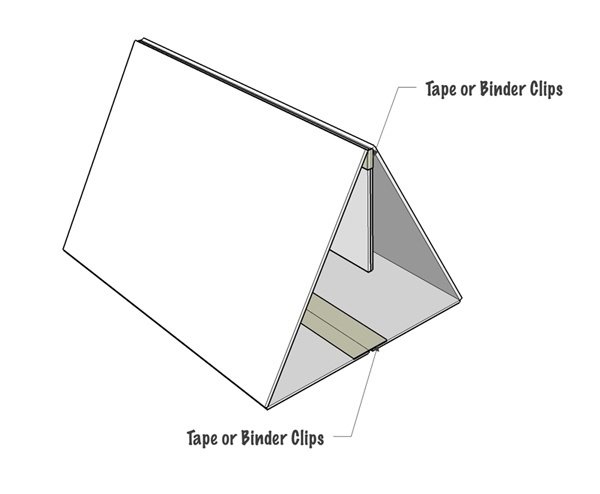
Wall Easels
Insulation Foam
Many of our easels in our studios are made from insulation foam that you can purchase at hardware big box stores such as HomeDepot. Note, there are several different types of insulation foam and some are heavier and more crumbly than the ones we use. We only use the R-Tech Insulfoam in 1.5″ widths which is essentially just styrofoam with no added chemicals or retardants added to it. There is a clear plastic covering on one side and a silver reflective plastic cover on the other. These make great easels because they are easy to move around and can stand on their own without any reinforcement. (Please note that we do not recommend any other type of building foam. Some of the other foams may have added chemicals in them or fiberglass which can be dangerous to cut or breathe. Please consult with someone at your local hardware store if you have questions or concerns about toxicity).
You can cut the foam with a serrated bread knife (but be aware that the foam will pull out and make a mess) and then cover the cut edges with duct tape to keep it clean if you need to cut it down in size. Our standard easel sizes are 6’ high by 4’ wide (~1.8m x 1.2m) which is a good size and can be moved easily. However, this size was chosen primarily to fit in the back of a small pickup. You can leave your panels 8′ high if they will fit in your studio and you want to have the most amount of space available. You can also tape two of these panels side by side if you want to paint much bigger paintings. We also tape 6’ lengths of 1″x 2″ (~1.8m x 1.5cm x 5cm) pine firing strips to each side to give them a little more rigidity and weight so that the panels don’t bounce around as much when you paint on them. In addition, you can mount lights to the side by clamping on to the wooden pieces.
Special Note: You will need to get long T-pins to attach your painter to the foam core panels. The regular sized push pins will not hold in the styrofoam but the longer length T-pins will work just fine.
Wood Frame Easels
You can also make wooden frames and tape thinner ½” insulation foam or cardboard to them. We used this style for many years. They are sturdy and a bit heavier. However, they can take awhile to make and require power tools so we don’t recommend them anymore. We include the designs here in case this is more appealing to you. Feel free to right click on any of the images and save them to your computer for future use.
Where to Buy
Temporary Easels
3-Fold Presentation Boards
- Elmer’s Display Board
- Office Depot Display Board
- Office Depot Foam Display Board
- Staples Poster Board
Wall Easels
Special note: you will need to find large cardboard or foam sheets (8′ x 4′) locally as most online vendors will only ship in very large quantities.
Foam Panel
Cardboard
Acoustic Insulation Board
This product is made from wood fiber impregnated with wax. It can be used as bulletin board material. It does NOT include any fiberglass. Please never use fiber glass acoustic tiles in your easels.
- Vendor: Home Depot
Wood Reinforcement Strips
Long T-Pins

